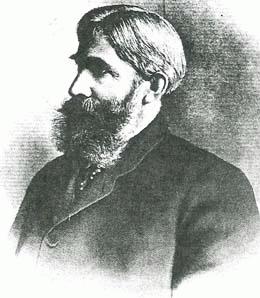On September 28, 1909, Yakima County commissioners approve the incorporation of Granger, located northwest of the confluence of Satus Creek and the Yakima River. The town is named for Walter Granger (1855-1930), who created the Yakima Valley's first irrigation project.
Walter Granger
In 1889, Walter Granger and a group of St. Paul, Minnesota, investors organized the Yakima Land and Canal Company, which proceeded to buy out Yakima Valley land owned by the Northern Pacific Railroad. The federal government had originally granted this property to the Northern Pacific in return for building a northern transcontinental railroad, with the stipulation that the land be sold five years after completion, to encourage settlement.
Granger, an irrigation expert from New York, used some of this land to create the Sunnyside Canal, which opened up much of the Yakima Valley to agriculture. Granger and his associates then started scouting the valley for townsites. They founded Zillah in 1892, and Sunnyside in 1893. Granger and his new bride, Maud Thomas, made Zillah their home.
The irrigated valley continued to draw more farmers and settlers, and in 1904 the newly formed Granger Land Company established a new town midway between Zillah and Sunnyside. They named the town Granger, although others wanted to call it Eaton -- after George Eaton (1955-1945), secretary of the land company -- or Seople -- a Yakama Indian of legend who was said to have saved her tribe from Ice Age floods.
Land of Opportunity
The founders of Granger had high hopes, and created a wish list of businesses they hoped to see in their new town. Among them were a beet sugar factory, a 60-room hotel, restaurants, a bakery, a saddler store, a harness repair shop, a furniture store with an undertaking parlor, a feed mill, a natatorium, and more.
To entice would-be landowners to the community, the Granger Land Company undertook an aggressive ad campaign in Seattle, Tacoma, and Spokane newspapers. Almost weekly, readers learned of the great opportunities available to them in Granger, and who to contact if they wished to own property or open a business.
The campaign worked well, and by 1909 the town had more than 300 residents, enough to incorporate by state law. An election was held on September 20, 1909, and voters approved incorporation. County commissioners made the results official on September 28, 1909. The town's first officers were Mayor C. W. Mentzer; Councilmen A. P. Peterson, E. B. Johnson, George Oldfield, E. N. Meloy, and A. Rodgers; Clerk Fred R. Hawn; and Treasurer A. C. Snowden.
In the next year, Granger's population grew by almost 200 people.

